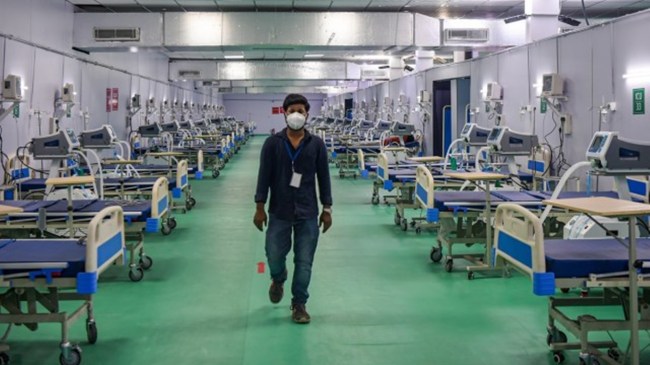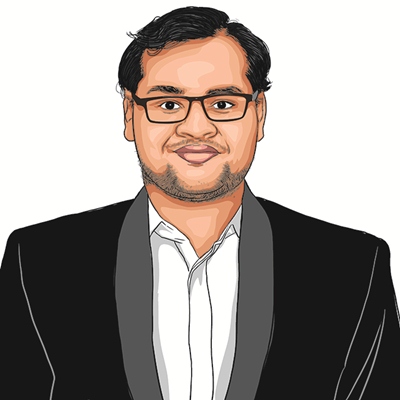Opinion I used to shout at the ‘hordes of patients’. Then I learnt what medical college didn’t teach me
A recent report by the WHO highlights the positive impact of compassion on the overall health and well-being of patients. But, as the report also finds, compassion can't be reduced to just behavioural change by doctors
 From OPDs built on upper floors with dysfunctional lifts, long waiting queues, and drug stock shortages, patients suffered miserably.
From OPDs built on upper floors with dysfunctional lifts, long waiting queues, and drug stock shortages, patients suffered miserably. I don’t know when my brain normalised screaming as the way to “handle” the hordes of patients who knocked on the doors of our hospital. I was a fresh graduate from a medical college whose ivory towers had protected my privileged ideas about the doctor-patient relationship. Then, one day, without any preparation, I was thrown head-first into the wards. No lectures or AETCOM classes came to my rescue as I roamed there sleeplessly, seeking refuge in the nuggets of information that I’d absorbed from international editions with glossy pages.
I felt unmoored. The white coat and stethoscope made patients perceive me as a healer. But did I have enough professional skills, let alone personal skills such as compassion, to deal with them? Screaming, then, was more of a defence mechanism; my way of pushing the patients away so as to not get attached. My way of not offering them a ground of hope is to only take it away later.
I wonder if screaming was also a way to resist the system that was based on a set of rules that prioritised diseases over the patients suffering from them. From OPDs built on upper floors with dysfunctional lifts, long waiting queues, and drug stock shortages, patients suffered miserably. The OPD functioned only till the afternoon, ignoring a large population of daily wage workers, who then had to turn to overcrowded emergency rooms with no respite. The patients who came to us with complicated surgery were not touched by another team of surgeons, even if they knocked on the doors of emergency.
Symptomatic treatment was our go-to. I remember saying, “Aur batao…aur batao” absentmindedly while an old patient went on with the list of symptoms. By the end of the two-minute session, when she was being shoved away by the guard, I had scribbled a long list of medications with a one-size-fits-all diagnosis — generalised body ache.
Now, after working in a PHC, I know that all she needed was a bit of attention, an empathetic ear, and somebody to “understand” her. With an ailing spouse and children away to bigger cities in search of work, there is nobody to talk to her. Multiple middle-aged and older women like her begin to sob when I ask them questions about their life apart from their diagnoses. They don’t need drugs as much as my assurance that they will be fine.
A recent report by the WHO highlights the positive impact of compassion on the overall health and well-being of patients. But, as the report also finds, compassion can’t be reduced to just behavioural change by doctors. It requires an equal mix of action, empathy, and awareness. It requires infrastructural development, active decision-making, intersectoral coordination, and the creation of a Standardised Operating Protocol (SOP) to reduce dropouts and promote equitable health. The provision of evening OPDs in Telangana is a welcome decision in such regard.
Compassion also needs a deeper engagement with the patient’s life which, unfortunately, remains rare among the medical fraternity. One can’t reach such an understanding by solving case studies in books or giving young doctors gyaan on how they should behave. It might not occur to most doctors sitting in their AC cabins that patients leave their TB medications because the daily trip to the DOTS centre costs Rs 30 or leave their wounds unattended because they weren’t spoken to nicely. Bringing patients to the centre of healthcare requires spending time with them, seeing their lives up close.
It is important to lead through example. The other day when I asked my interns about the dietary advice they would give to patients, they chimed in with lots of fruits, vegetables, and paneer without understanding the socio-economic conditions of the patients. Only when I told them about the meagre wages of the migrant population did they feel embarrassed and started thinking of cheaper alternatives.
We need to catch the students early and expose them to these situations. The recent inclusion of the Family Adoption Programme (FAP) and District Rural Posting (DRP) in new NMC guidelines are welcome additions, but their implementation needs to be strictly monitored.
Gupta is a doctor, and author of Yeh Dil Hai Ki Chordarwaj






